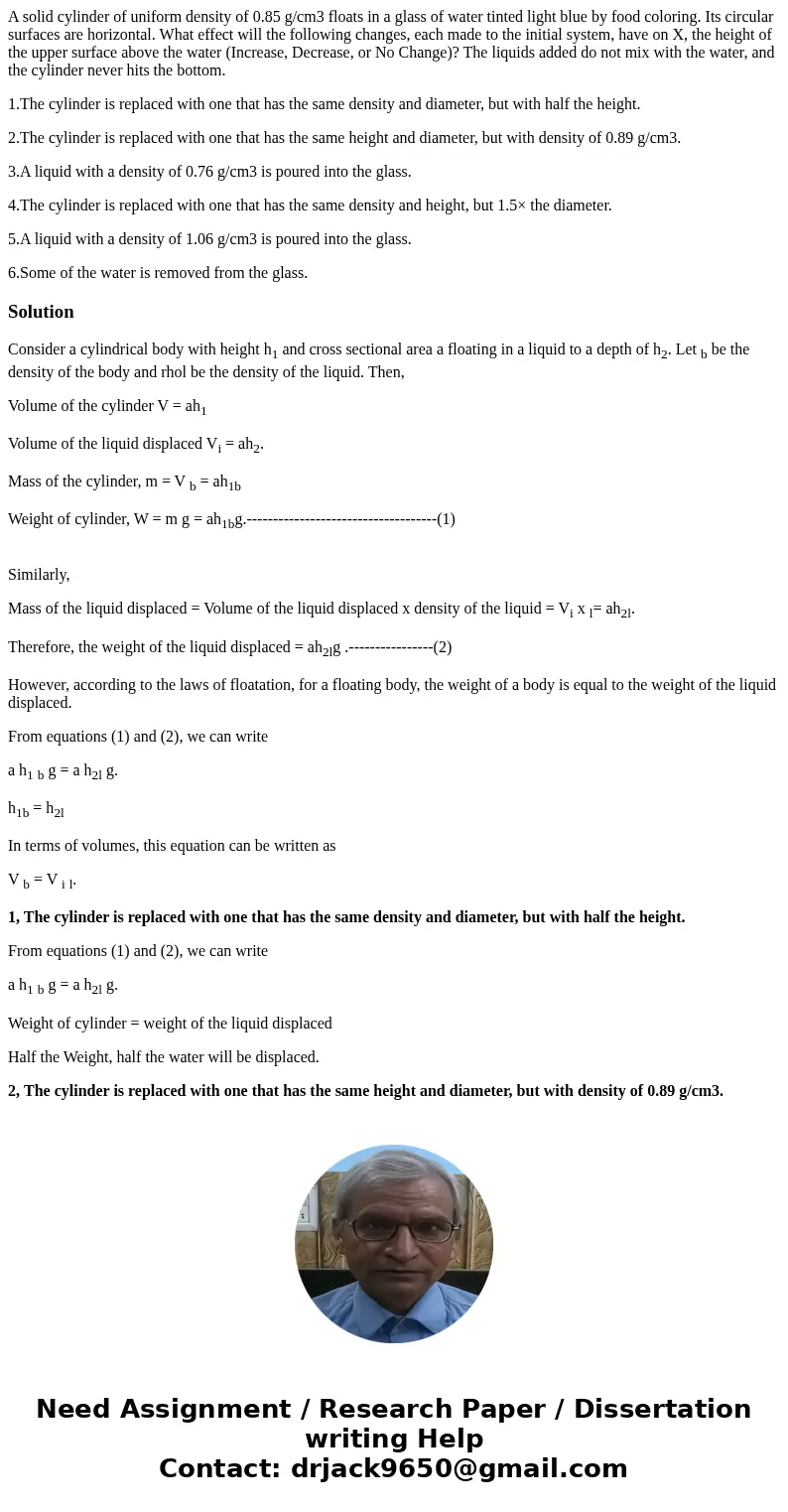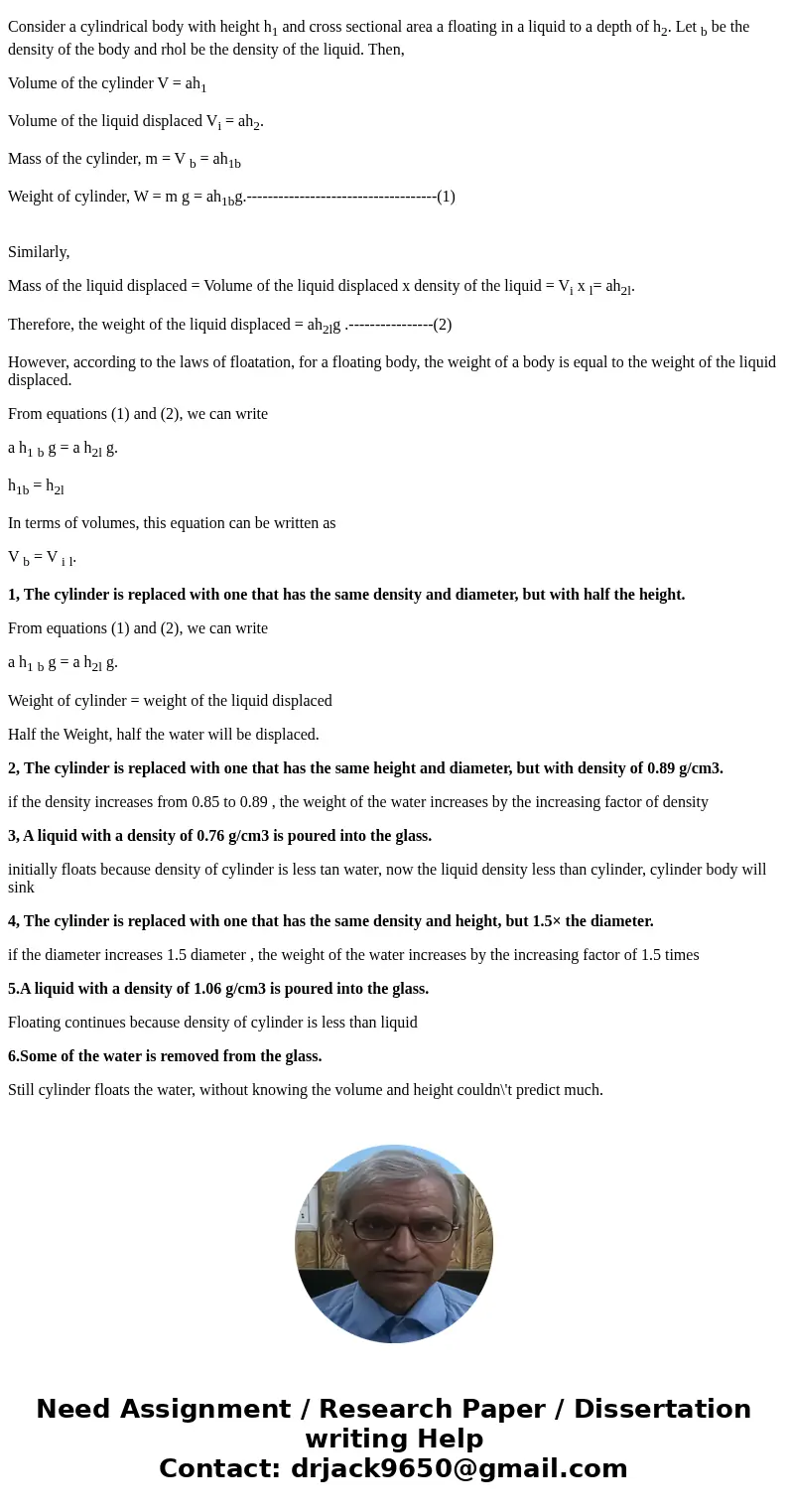A solid cylinder of uniform density of 085 gcm3 floats in a
A solid cylinder of uniform density of 0.85 g/cm3 floats in a glass of water tinted light blue by food coloring. Its circular surfaces are horizontal. What effect will the following changes, each made to the initial system, have on X, the height of the upper surface above the water (Increase, Decrease, or No Change)? The liquids added do not mix with the water, and the cylinder never hits the bottom.
1.The cylinder is replaced with one that has the same density and diameter, but with half the height.
2.The cylinder is replaced with one that has the same height and diameter, but with density of 0.89 g/cm3.
3.A liquid with a density of 0.76 g/cm3 is poured into the glass.
4.The cylinder is replaced with one that has the same density and height, but 1.5× the diameter.
5.A liquid with a density of 1.06 g/cm3 is poured into the glass.
6.Some of the water is removed from the glass.
Solution
Consider a cylindrical body with height h1 and cross sectional area a floating in a liquid to a depth of h2. Let b be the density of the body and rhol be the density of the liquid. Then,
Volume of the cylinder V = ah1
Volume of the liquid displaced Vi = ah2.
Mass of the cylinder, m = V b = ah1b
Weight of cylinder, W = m g = ah1bg.------------------------------------(1)
Similarly,
Mass of the liquid displaced = Volume of the liquid displaced x density of the liquid = Vi x l= ah2l.
Therefore, the weight of the liquid displaced = ah2lg .----------------(2)
However, according to the laws of floatation, for a floating body, the weight of a body is equal to the weight of the liquid displaced.
From equations (1) and (2), we can write
a h1 b g = a h2l g.
h1b = h2l
In terms of volumes, this equation can be written as
V b = V i l.
1, The cylinder is replaced with one that has the same density and diameter, but with half the height.
From equations (1) and (2), we can write
a h1 b g = a h2l g.
Weight of cylinder = weight of the liquid displaced
Half the Weight, half the water will be displaced.
2, The cylinder is replaced with one that has the same height and diameter, but with density of 0.89 g/cm3.
if the density increases from 0.85 to 0.89 , the weight of the water increases by the increasing factor of density
3, A liquid with a density of 0.76 g/cm3 is poured into the glass.
initially floats because density of cylinder is less tan water, now the liquid density less than cylinder, cylinder body will sink
4, The cylinder is replaced with one that has the same density and height, but 1.5× the diameter.
if the diameter increases 1.5 diameter , the weight of the water increases by the increasing factor of 1.5 times
5.A liquid with a density of 1.06 g/cm3 is poured into the glass.
Floating continues because density of cylinder is less than liquid
6.Some of the water is removed from the glass.
Still cylinder floats the water, without knowing the volume and height couldn\'t predict much.


 Homework Sourse
Homework Sourse